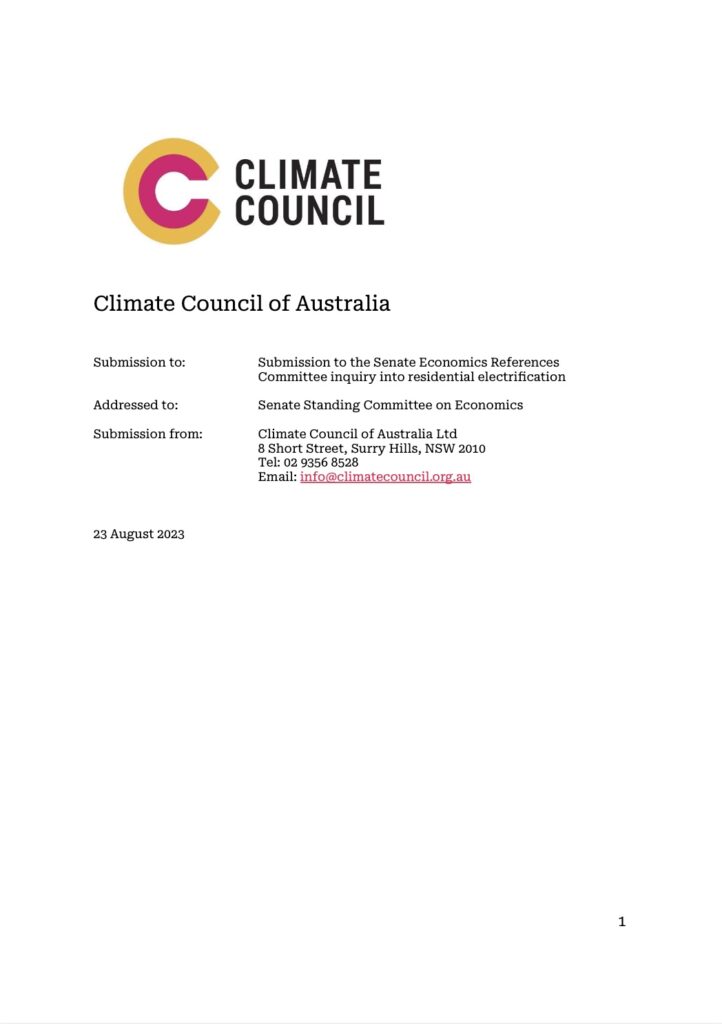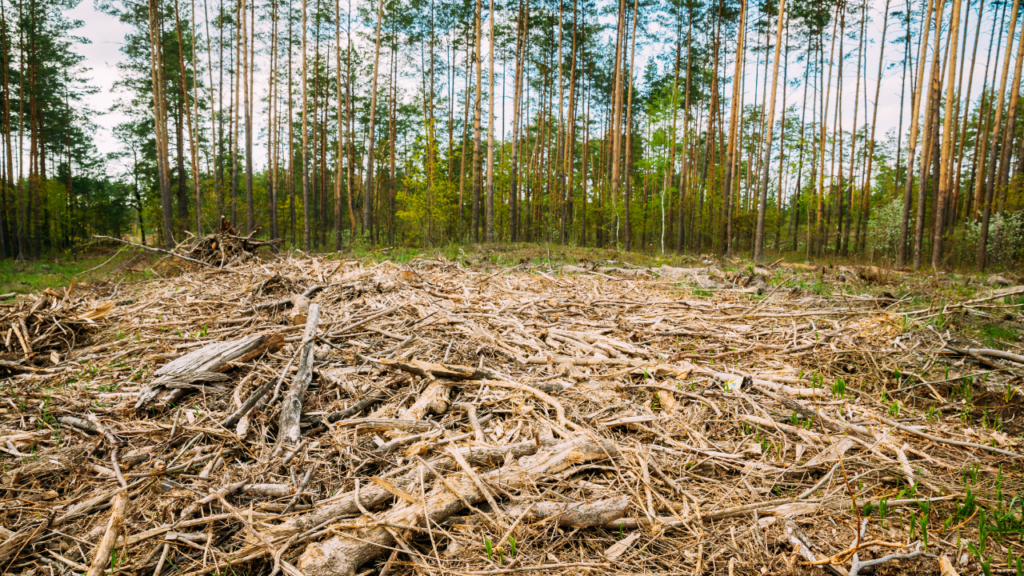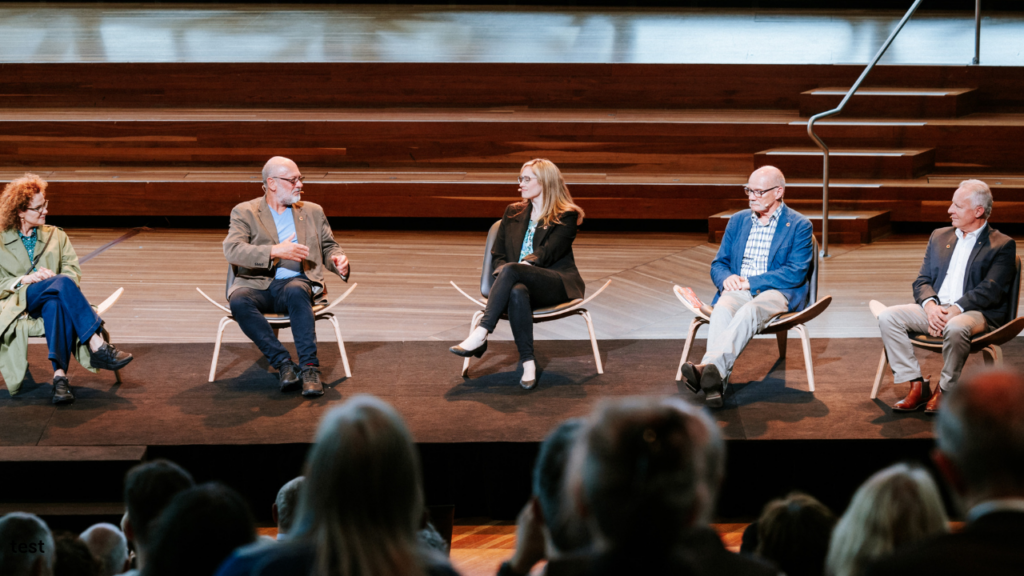Australia faces two interlinked crises: climate change and the cost of living. Electrification, along with greater energy efficiency, is a key part of the solution to both.
Climate change is already threatening lives and livelihoods. Extreme weather disasters, including dangerous heat waves, extreme downpours and devastating fires, are becoming more frequent and severe. Worse is to come but we can substantially limit future harms by rapidly cutting greenhouse emissions this decade.
To play our part in global efforts, Australia must aim to reduce emissions by 75 per cent below 2005 levels by 2030 and reach net zero by 2035 (Climate Council 2021, 2023a). Australia’s current emissions reduction target is 43% below 2005 levels by 2030; yet Federal Government projections indicate that we are not currently on track to achieve this (DCCEEW 2022). We must do more. Ensuring all of Australia’s 10 million homes are electrified, while making them more efficient, can play an important role in driving down national emissions. Homes currently produce 10% of our carbon emissions (DCCEEW 2023a).
At the same time, with levels of inflation not seen since the 1970s, the cost of living is heavily impacting household budgets. Energy costs, alongside housing, education and food, are direct contributors. Gas and coal are not only harmful fossil fuels, they are driving up energy costs. Households use gas to heat, cool, and cook in their homes and in certain states, coal fired power is the primary source of electricity.
Gas and coal prices have surged in recent months due to the international energy supply crunch, precipitated by the war in Ukraine and the global economy emerging from the COVID-19 pandemic.
Moreover, the average energy efficiency of Australian homes is among the worst out of rich countries globally. We use too much energy and gain too little when powering our homes. This results in homes that are expensive to run, as well as often being uncomfortably hot or cold to live in (Climate Council 2022a).
However, we can tackle both the climate and cost of living challenges simultaneously in the best two-for-one deal Australians will ever see.
These moves would be popular. A recent poll on behalf of The Australia Institute found that more than half of Australians (55%) feel optimistic about electrifying homes, while just 13% feel negative. Further, the poll also found that people were more optimistic about electric appliances over gas specifically (TAI 2023).
Yet there are barriers to electrifying homes and improving their energy efficiency at the speed and scale we need to see now. For the Committee’s consideration, this submission canvasses several practical policy options to overcome these, drawing on Climate Council’s work on home electrification and energy efficiency. Electrification and energy efficiency should be considered side-by-side because together, they unlock the greatest benefits for Australians.
This is an exciting time. By electrifying our homes and improving their efficiency, we can lower energy bills and emissions whilst smoothing Australia’s pathway to a grid powered by more renewable wind and solar energy (Climate Council 2023b).
We thank the Committee for the opportunity to provide this submission and would welcome the opportunity to discuss its contents with you further.
Summary of recommendations
In this submission, Climate Council has discussed a range of opportunities to advance the electrification of Australian homes while also improving their energy efficiency. A summary of our recommendations is provided below; further analysis providing the rationale for these is provided throughout the body of the submission.
Recommendation 1: Support Australians to electrify and upgrade the energy efficiency of their homes with zero-interest loans and direct upgrades for low-income households
The federal government should enable Australian households to electrify by matching the size and scope of the Household Energy Upgrade Fund to the scale of the upgrade task ahead of us. More than five million homes are still connected to the gas network. Given the number of households needing to get off gas and electrify, the current scale of funding available will not meet the need. State and Territory Governments should match financial contributions and coordinate delivery to achieve maximum speed and effectiveness in the roll-out.
Additionally, governments should directly upgrade the homes of the most vulnerable Australians to be all-electric. There would be significant cost, comfort, health and emissions reduction benefits associated with ensuring all of Australia’s 425,000 public, social and Indigenous community homes can run on clean and cheap electricity.
Recommendation 2: Prioritise electrification and energy performance when building and upgrading homes
We need to ensure that best practice applies to new homes when they are built, avoiding the need upgrade them later. To improve the energy performance of new homes and deliver cheaper bills for households from the first day they connect to the grid, the National Construction Code should be updated to require new residential properties to be all-electric. This should include ‘knock down, rebuild’ re-developments on existing blocks, as well as in new greenfields suburbs.
Recommendation 3: Require the replacement of gas appliances with more efficient electric alternatives from 2025
In addition to ending gas connections for new homes, we should seek to ensure that gas appliances in existing homes are replaced with cheaper, cleaner electric alternatives when they reach the end of their working life.
Individual states and territories could require replacement with electric appliances within their own jurisdictions, but there is also the opportunity to coordinate a national approach. Getting this policy in place as soon as possible is important because household appliances can have a lifespan of more than a decade, so every gas cooktop or hot water service sold today will likely stay in service well into the 2030s.
Recommendation 4: Plan for wide-scale electrification of households in designing and delivering our future energy system
Australia is aiming for 82% of its electricity to be generated from renewable sources by 2030. We know that residential electrification will increase supply needs at different times of day, the direction of supply from the grid as well as the location of transmission and power generation. This will impact domestic energy security and household energy independence, import considerations for the national grid. Therefore, this work needs to be informed by a national, coordinated plan for transitioning households so that regulators, investors and planners understand precisely how much clean energy supply we will need and where.
Recommendation 5: Implement and coordinate minimum energy efficiency standards for rental properties
Minimum energy efficiency standards for rentals are needed for all states and territories so that everyone has a home that is liveable, safe and affordable to run. In 2023, the ACT is incorporating a new requirement for all rental properties to have ceiling insulation that meets a minimum standard of thermal efficiency. These kinds of requirements should be standardised and made mandatory for rental properties across Australia so everyone can share the benefits of better energy performance.
Recommendation 6: Set clear targets for energy efficiency to drive demand reduction
Climate Council recommends that all levels of Australian government collaborate to develop a well-designed and coordinated system of energy efficiency targets that reduce demand. This will provide a clear signal to energy providers and Australian households about the importance of improving how we use electricity as we electrify everything.
Recommendation 7: Disclose energy efficiency ratings when selling properties
Disclosing the energy performance of a home means that buyers know what they are purchasing at the time of sale. Making that information more visible empowers Australians to make better decisions and avoids saddling people with higher running costs for a home with poor energy performance.
A coordinated, national approach that requires disclosure of energy efficiency ratings during property sales would help kickstart a wave of further investment in energy performance upgrades and retrofits for existing homes around Australia.
Recommendation 8: Partner with building industry peak bodies, unions and trades associations to educate retailers, tradespeople and installers about great all-electric alternatives to gas appliances.
There is an opportunity to train workers in the building and servicing of all-electric homes so tradespeople and installers know about all-electric alternatives. This could be facilitated through the New Energy Apprenticeships Initiative, as well as being directed by peak bodies, unions and trade associations.
In particular, courses should be provided by education providers to upskill workers on how to shift away from gas and micro-credentials offered through the National Skills Agreement.











